Catching the Bullet: How to Practice Nonviolent Communication with Your Partner
In wedding vows, we promise that we are going to “love”, “cherish”, “support, etc.” our partners through all the ups and downs. It might sound weird to promise “not to use violence” to our partners, probably because people rarely consider themselves capable of getting violent with their significant others.
“I never hit my partner,” one might say so as to explain why the word "violence" has nothing to do with them. However, I have often learned from clients that you don’t have to get physical to get violent — words are powerful enough to destroy trust, intimacy, and self-worthiness in relationships.
“Really? My words can hurt my partner?” Oftentimes, people can hardly believe that their words or actions can be so impactful to their partners. However, when it comes to another question: “Really? My partner’s words can hurt me?” The answer is almost always an absolute yes. In intimate relationships, we count on each other so heavily that we naturally give each other a tremendous amount of power to impact us – their words can either heal or destroy.
Although we all dream of a peaceful home, we can shoot word bullets at our loved ones without even noticing. That's why it is crucial to begin by recognizing the bullets.
When communication gets violent…
We want to catch the bullets before they hit our loved ones or ourselves.
Communication theories might help one become aware of flying bullets in the air. Dr. John Gottman’s research identified four communication styles that undermine relationships — Criticism, Defensiveness, Contempt, and Stonewalling. As a matter of fact, they used those four criteria to predict the end of a relationship, and their prediction got a frightening 93% accuracy.
Nonviolent Communication distinguishes observation and facts from judgment and comments – people feel hurt and the need to defend themselves when being judged negatively. In other words, judgment and comments (easily received as criticism and blame) are perceived as bullets.
Another way to examine violence in communication is to ask yourself – Am I trying to force understanding? Although the initial goal was to create understanding and connection, when we desperately demand the “good” result, it is very tempting to grab anything that gives us power – and it is also tempting to believe that violence is the most straightforward resort.
Non-violent Communication? How?
Violence undermines safety in relationships. Without safety, there is no trust. Without trust, there is no love and intimacy. Nonviolent Communication, developed by Marshall Rosenberg and colleagues, teaches that it is possible to communicate disagreement in a compassionate way. Nonviolent Communication has four components:
1. Observation.
Share what I see or hear that does or does not contribute to my wellbeing.
2. Feelings.
Share my feelings and focus on my inner experience rather than interpretations of people's actions. (Check out the feeling list here)
3. Needs.
What I need or value that causes my feelings. Sharing needs helps the other person have empathy for me, especially if the needs are described as universal, such as needs for safety or rest, etc. (check out the need list here)
4. Request.
Since needs are rather abstract, it is helpful to specify the concrete action to be taken that can meet my need(s).
Different from using violence to secure my power in a relationship, Nonviolent Communication acknowledges my partner’s power in the relationship.
You have the power to meet my needs and make me feel a certain way. Committing to a relationship means power sharing and becoming vulnerable with each other.
While saying “I will love you and support you.” feels good and right, saying “I’m going to drop my weapon and share power with you.” might be the harder part, yet totally worth it because — Real intimacy comes with sharing vulnerability.
Search Our Other Blogs!
Interested in Counseling for Communication Skills, Boundary Setting, or Interpersonal Violence?
If you’re a Marylander who knows that counseling is the direction you need to take, the therapists at LifeSpring Counseling Services are here to help. We offer online counseling services for mindfulness, depression, anxiety, trauma, and grief and loss. We also offer Brainspotting as a specialized service, and Brainspotting can be done online, too!
Here’s how you can get started! Online counseling for communication skills, boundary setting, and interpersonal violence isn’t the only service offered at our Maryland office
The counselors and social workers at our Maryland office also offer counseling services for trauma, grief and loss, boundary setting, communication skills, and difficult life transitions. We also offer specialized counseling services including Brainspotting and spiritually-integrated counseling. Because we are located next to several local universities, we also work with college students and international students.
Written by: Si Meng, LGPC
Si is a licensed therapist at LifeSpring Counseling Services in Maryland who specializes in trauma, depression, anxiety, life transitions, and mood disorders. She offers multicultural and bilingual services in both English and Mandarin.
Photo Credit: Liza Summer, The Gottman Institute, Alex Green, & Antoni Shkraba
Date of download: 9/6/2022



